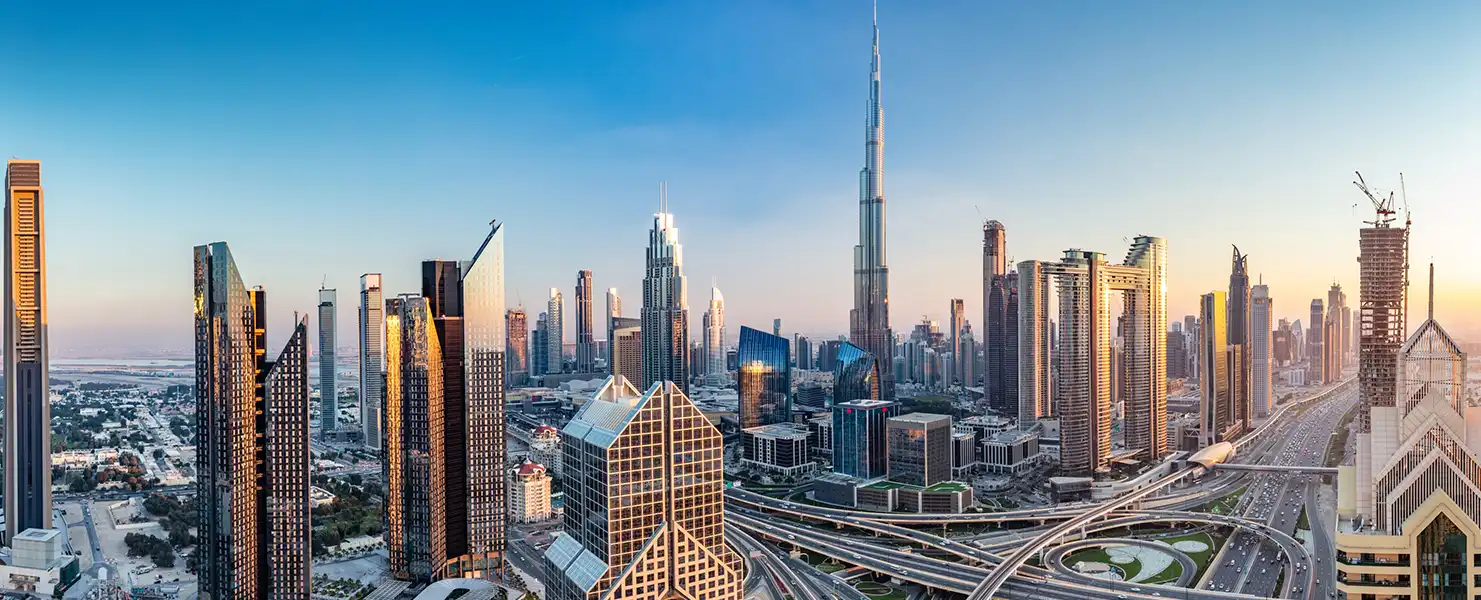Dubai has always had a flair for going big when it comes to expansion and opening new projects.
So, suppose you’re watching the Dubai real estate market with an investor’s eye or as a resident. In that case, you might know that with many mega-projects launching this year, property value has now become its primary focus for 2025.
Here’s a detailed breakdown of how these developments are influencing property values, buyer behaviour, and long-term growth potential.
1. The Dubai Urban Master Plan 2040
Before zooming in on specific projects, it’s important to first unwrap the foundation behind them, which is the Dubai 2040 Urban Master Plan. In case you aren’t up to date, the 2040 Urban Master Plan is set to:
- Increase green and recreational spaces by 105%.
- Triple the size of public beaches.
- Expand land for hotels and tourist activities by 134%.
- Focus on developing five major “urban centres” instead of just central Dubai.
Now this matters because every single mega-project launching now is designed in sync with this long-term blueprint. Which means you’re investing in a larger district vision that’s already been sanctioned and budgeted for by the government, making these projects much higher in value.
2. What are the next 2025 mega‑projects in Dubai?
Let’s break down the key projects reshaping the market this year, and if you are an investor, these are projects you’d want to keep your eyes on.
Dubai Islands
Formerly known as Deira Islands, the Dubai Islands are now being built as a 17 square kilometre coastal island with five sub-islands, each designed with luxury lifestyle, entertainment, innovation, wellness, and eco-tourism as a part of it.
What sets this project apart from others? Expect increased demand for beachfront villas, branded residences, and short-term rental properties. Proximity to upcoming ports and cruise terminals adds commercial value.
The Palm Jebel Ali relaunch
Back from hibernation, Palm Jebel Ali is being built twice the size of Palm Jumeirah, with a stronger focus on sustainability and ultra-luxury villas.
The impact of this is that early investor interest is high, even before construction began, units were selling out and reselling for nearly 4-6% ROI. Surrounding communities like Dubai South and Jebel Ali Hills are already seeing secondary price growth due to the spillover effect.
The Loop by URB
A 93km climate-controlled urban highway for cyclists and pedestrians is set to become one of the world’s most advanced green corridors to increase physical mobility in the city during warmer months and make Dubai a walkable city, such as the likes of New York.
- Impact of this is that nearby communities like Business Bay, Al Quoz, and parts of JVC may see a value bump as connectivity and lifestyle appeal improve.
Dubai Creek Harbour expansion
Still expanding with new towers, retail zones, and the future Creek Tower, intended to outscale the Burj Khalifa.
- What happens here is that high-end apartments here are underpriced relative to Downtown Dubai. As infrastructure nears completion, the price per sqft will likely surge.
3. Infrastructure drives value, always has, still does
Mega‑projects alone don’t change the game. Infrastructure also does it and with certain plans in mind here’s how 2025 is looking for Dubai:
- Blue line metro extension will link International City to Al Warqa and Mirdif — previously under-the-radar areas now getting investor interest.
- New highway corridors connecting Dubai South to central Dubai will shrink commute times by 20-30%, lifting value in areas like Dubai Industrial City and even Al Furjan.
- Etihad Rail link to Abu Dhabi and eventually the northern emirates it is expected to add a serious economic layer to communities like DIP, Jebel Ali Free Zone, and the Expo corridor.
4. The investor shift in the market
What you’re seeing in 2025 is a mindset shift in the investor ecosystem. Buyers aren’t just looking for homes with good layouts or branded interiors but they are buying based on what the location will look like in 3–5 years.
In short:
- Capital growth = Rental yield (for high-net-worth buyers)
- Masterplanned communities are better than isolated towers
- Infrastructure-linked locations are better than central but congested ones
This is exactly why areas like Dubai South, Creek Harbour, JVC, Al Furjan, and even Dubai Islands are getting more attention now than traditional hotspots like Marina or Downtown.
5. The bottom line is to follow the blueprint, not the hype
What’s changed in Dubai’s real estate market now is that speculative buying is over. In 2025, the value is in understanding where the government is putting its time and money. The mega‑projects are anchored in timelines, budgets, and infrastructure support.
If you’re looking to invest or buy in Dubai, don’t just ask: “What’s the price per square foot today?” Ask instead:
“What will this place look like three years from now, and who else is building around it?”
Thinking about your next investment in Dubai?
Whether you are looking for villas for sale in Dubai or are thinking of investing in something smaller, you might want to consider apartments for sale in Dubai.



